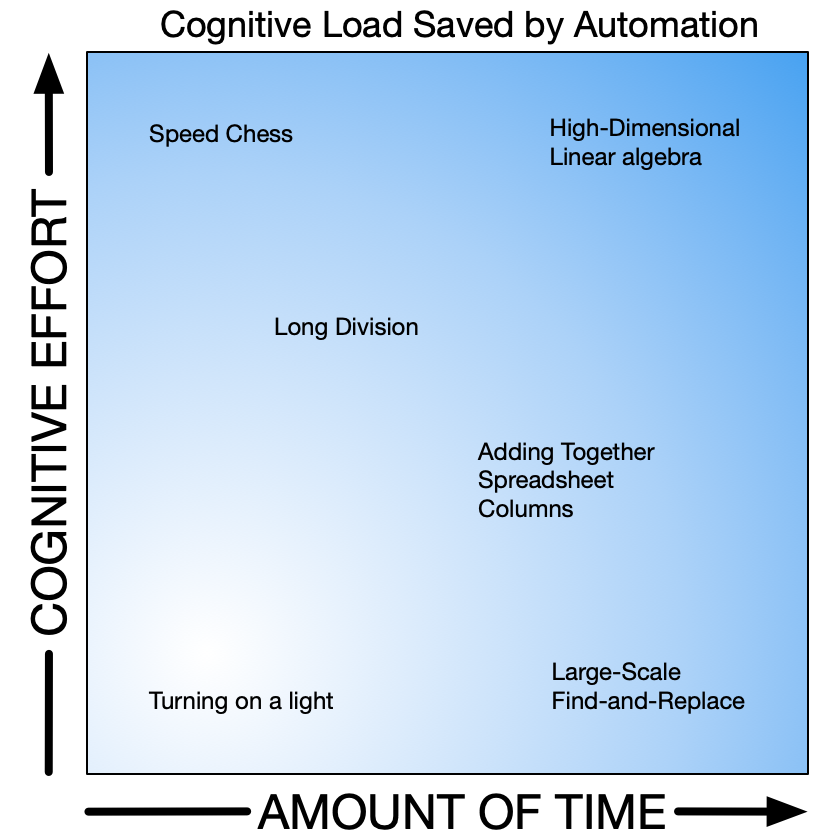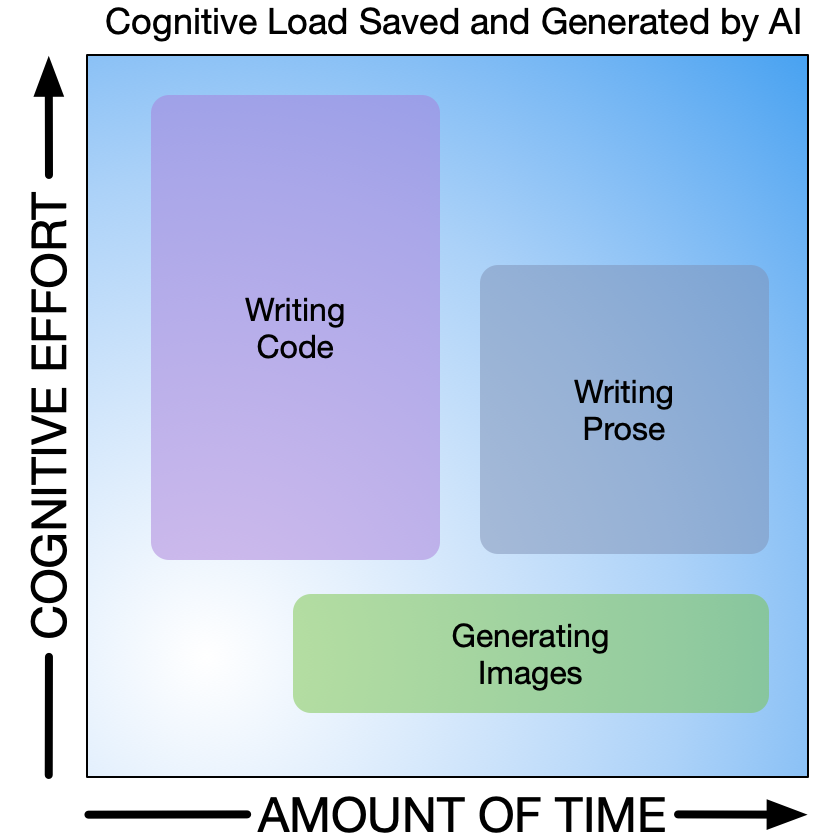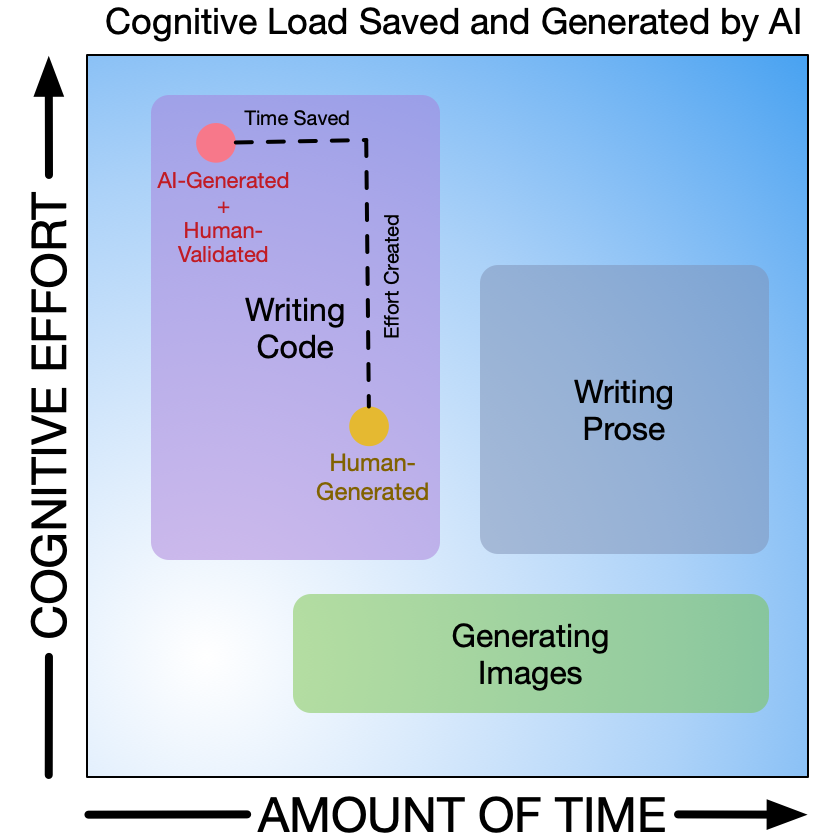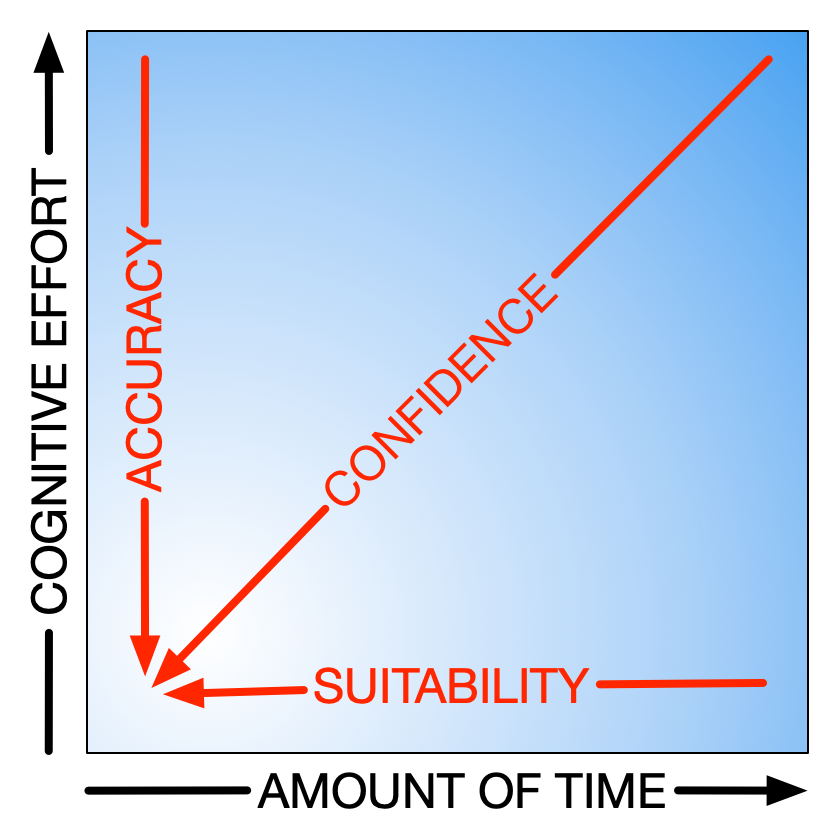AI is set to teach us more about how our own brains work—but not in the way you might think.
Generative AI is already automating some of our intellectual activities at work. Many of the benefits and drawbacks are obvious, but amidst all the talk of neural networks, a key component seems to be missing from the conversation: our own dear minds.
The benefits of automation are usually stated in terms of time, since “time is money”, and work is a financial activity. However, truly high-performing individuals and teams know that time is only one factor to manage. Together with greater awareness of the importance of mental health, an understanding of the significance of “cognitive load” has been emerging in science and psychology.
The truth is, in knowledge work, cognitive load is money, too. Faced with myriad decisions, a mentally tired worker is a less effective worker, whose resourcefulness and decision-making are as critical, if not more critical, to their effectiveness than sheer hours spent behind a screen.
Since cognitive load is simply cognitive effort over time, it can be useful to separate the two dimensions. Existing forms of automation have been helping us save time and cognitive effort for a while now. Here is a plot of some of these activities:

Find-and-replace, for example, saves us time in the mindless activity of substituting one piece of text for another. Playing speed chess with the help of AI can now get us to a winning game against any human every time, saving us strenuous thinking in a fixed amount of time. Motion lights save us the tiny amount of both time and effort required to remember to flick a switch.
Computers also excel at vast amounts of tricky math, which, combined with vast amounts of content to encode into math and manipulate, is precisely what has led to present advances in the usefulness of AI. Generative AI is currently only useful, however, under human supervision.
I recently undertook three activities as a “cyborg”–that is, one part AI to generate the content, one part person to validate the result. I found that the amount of time and cognitive effort saved by AI, combined with the amount of time and cognitive effort required by me to supervise and validate the result, varied considerably:

Note that none of this accounts for other important dimensions–such as the pleasure involved in playing chess or the talent involved with making visual imagery. This is just about seconds and synapses.
Generating placeholder images for a video game using stable diffusion, for example, was largely just a matter of fiddling with prompts and hitting refresh, since generative AI is based on statistics and therefore produces a different result every time, even with the same prompt.
It took time but little effort to arrive at something that represented the feel I was after and allowed me to continue developing the game. I have since hired a human artist to re-draw the AI placeholders in their own unique and consistent style.
The problem I foresee in cyborg working is the extent to which our obsession with speed will lead to a false economy and perpetuate the epidemic of burned-out knowledge workers making bad decisions.
Consider one recent experience writing code:

For non-trivial coding, it is often harder to edit someone else’s code than it is to write it yourself. So, while AI undoubtedly saved me a lot of typing time, the cognitive load imposed by having to check it for accuracy more than cancelled this out.
So how do we drive down the time and cognitive effort required to validate AI results? The factors influencing the real power of what AI generates are threefold: how accurate it is, how suitable it is, and how much we can have confidence in it as a result.

Generative AI is currently a cocktail of statistics and internet data, which is to say that anything it mixes up needs to be carefully checked. Because its results are based on statistics, “100% accurate” will never be on the cards. Furthermore, because this technology’s power lies in consuming large data sets, the caveats of information gathered from open sources such as the internet all apply. Fact-checking is the new intellectual hygiene.
There is tremendous promise ahead for our AI-enhanced cyborg lives–the same promise as traditional automation: greater output and less grunt work. All the same socioeconomic perils apply as well. However, unlike past waves of automation, this one is going to hit us where we live–our minds.
Continually evaluating what our use of these vast but naive implementations of neural networks is doing to our own actual brains will be a skill to survive and thrive as a cyborg. With each tool, we must ask: Is it accurate? Is it fit-for-purpose? Is good enough good enough in this case?
Be good to your mind in the days ahead. After all, you can’t just fix it by turning it off and on again.